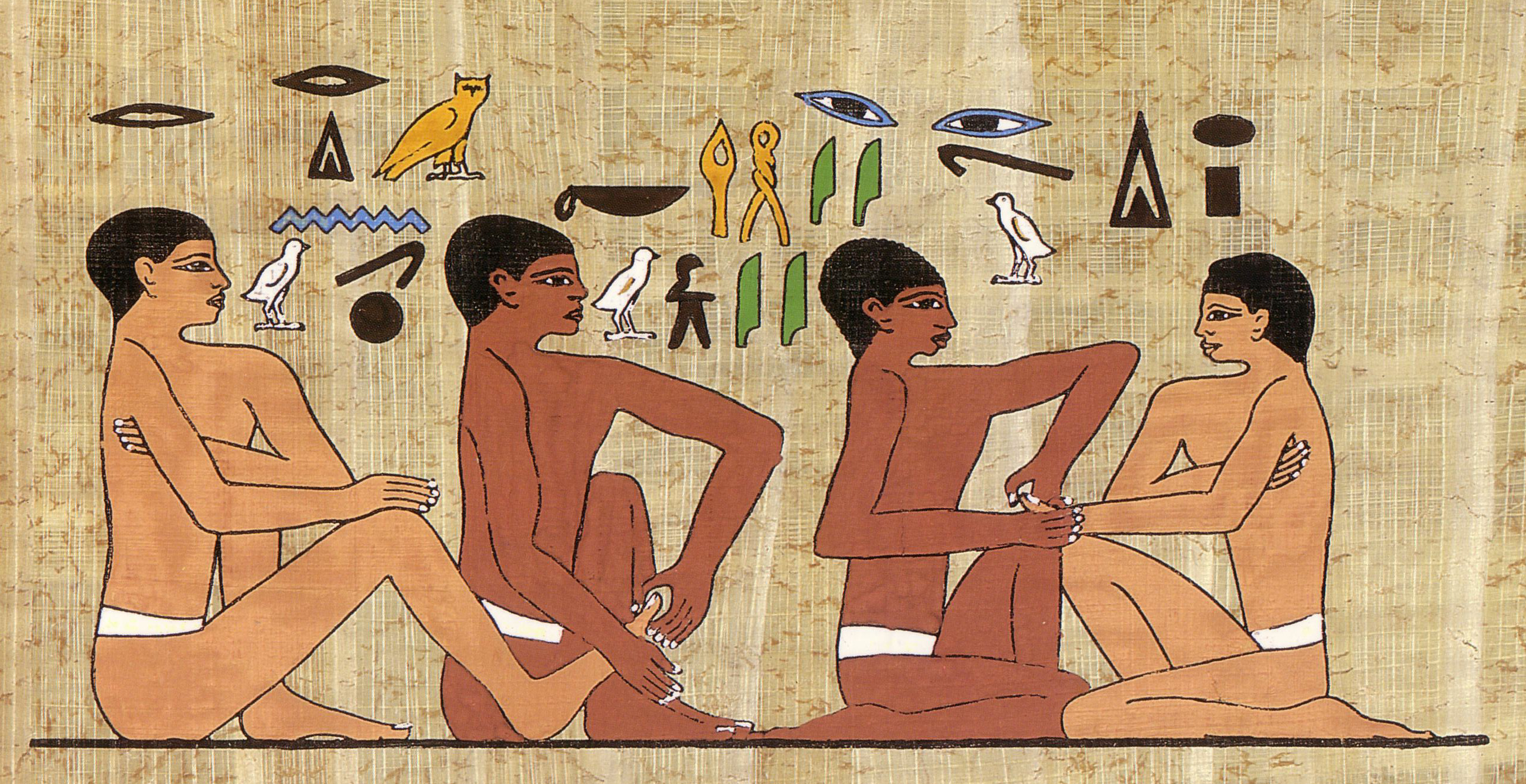This question remains to this day. Could it be an archetypal form of therapy found everywhere in the world? That is what I think. As Christine Issel writes in her very interesting book: Reflexology: Art, Science & History « no one culture can claim to have “discovered” reflexology because different forms of working on the feet to effect health have been used by people all over the world since the beginning of time. » Examples of foot work in the form of pictures or statues have been found in India, Japan, China and Europe but no written documentation has yet been discovered.
The oldest documentation that could be interpreted as depicting the use of reflexology is found in Egypt, in the towns of Giza and Saqqara. In Saqqara, in the tomb of the highest official after the Pharaoh, the physician Ankhmahor, we find carved on one of the six walls, a scene representing a practice of reflexology.
(See figure 1.)
According to the Papyrus Institute in Cairo and A. Badawy’s book: The Tomb of Nyhetep-Ptah at Giza and the Tomb of Ankhamahor at Saqqara 1975, p.19, the hieroglyphs carved above the scene of a foot and hand treatment read as follows:
“ Do so it will give strength anew ”.
Comment: this sentence comes from the patient who complains of his weakened hand, wishing that care provided by the doctor will bring his strength back.



